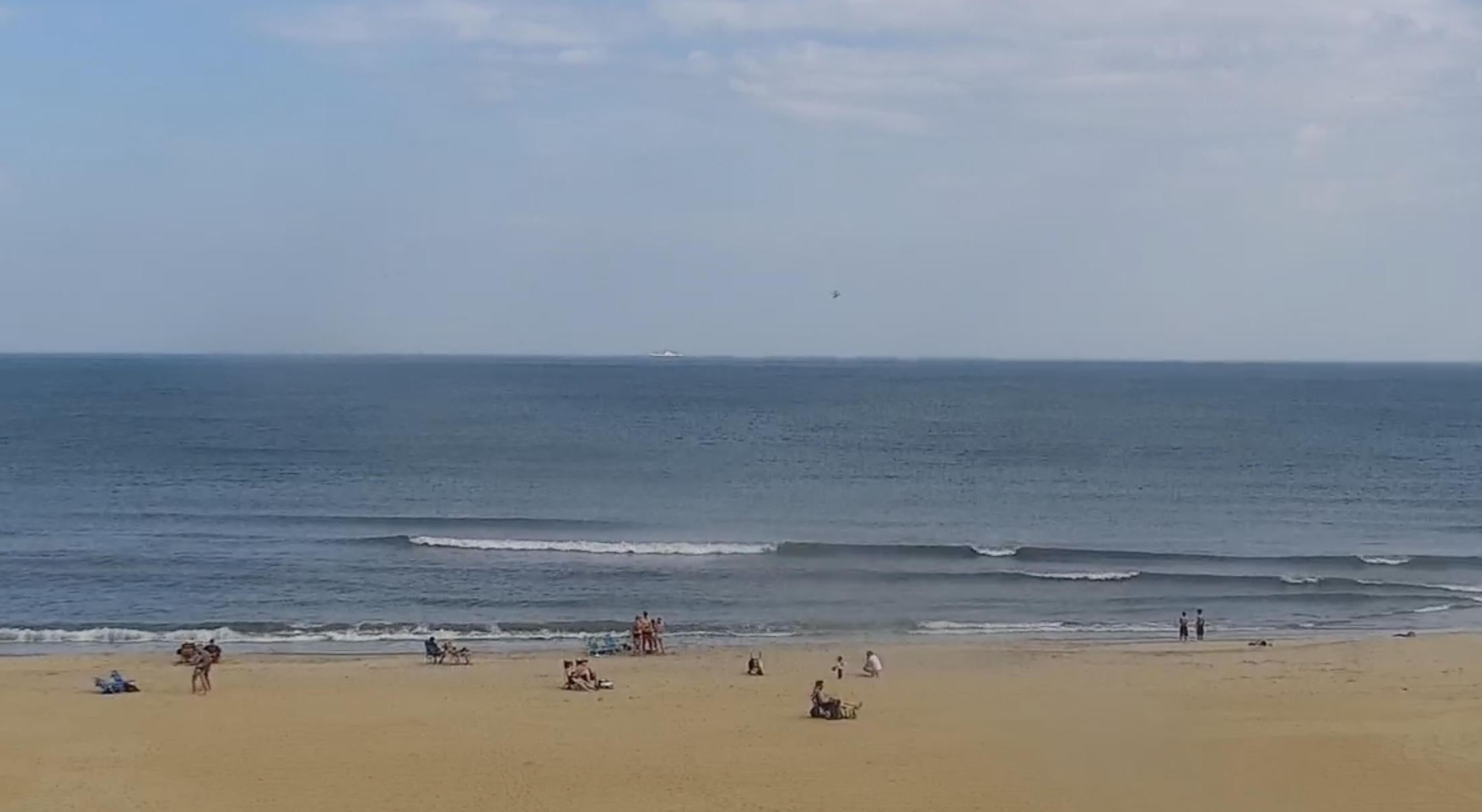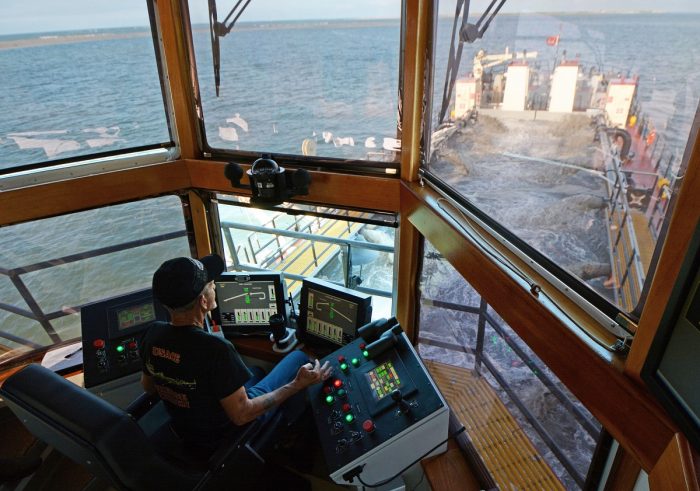
This is the second in a special reporting series on federal infrastructure spending and North Carolina’s navigation needs.
Lacking high-volume marine traffic or large ports, North Carolina’s northeast coast typically qualifies for far less federal funding to help maintain navigational channels and inlets than do the state’s southern coastal communities.
But mariners in Dare and Hyde counties will be getting their fair share of benefits from the $1.2 trillion Bipartisan Infrastructure Law that Congress passed in November, with nearly $60 million of it going to the U.S. Army Corps of Engineers for eastern North Carolina waterways, according to Sen. Thom Tillis, R-N.C.
That’s on top of an additional $22.81 billion provided to the Corps in the 2022 Disaster Relief Supplemental Appropriations Act.
It’s also a nice break for the Corps, which has been advocating for funds to address smaller projects that may not rank high nationally, but are important to less populated regions and communities.
“We screamed and hollered up the line for funding, and that’s the reason we got funded,” Bob Keistler, chief of the Corps’ Wilmington District Civil Works Programs and Project Management Branch, said in a telephone interview, referring to the supplemental funds allotted in the infrastructure bill. “We’re getting a chance to come back and do some spring cleaning here on things that we haven’t been able to do in a while.”
Northeastern North Carolina Projects
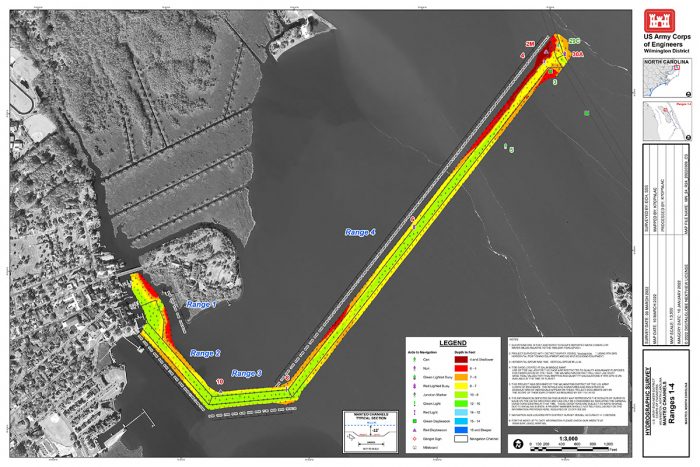
Shallowbag Bay
Funding of $6.4 million is set to go to dredge Manteo Shallowbag Bay, the inner channels at Oregon Inlet from the Basnight Bridge to Wanchese Harbor, to Old House Channel, out to the Pamlico Sound.
“We have about, I think, five or six spots that we plan to dredge where the shoaling is an issue,” Brennan Dooley, with the Corps, said in the same telephone interview, adding that the scope of the work is not finalized.
Oregon Inlet’s inner channels are federally authorized, but the dredge work will be put out for bid to private contractors.
Although the amount of work for industry dredges has created more competition for Corps contracts, Dooley said preparation work is done before the bid is posted so that they can move quickly when a contract is signed.
“Historically, we’ve been able to get someone in there,” Dooley said.
The main navigational channel that goes under the bridge to the ocean bar is a separate project that is maintained regularly by Corps dredges.
The Corps operates a handful of government dredges year-round to maintain waterways along portions of the Gulf and East coasts and the Great Lakes.
Work in the inner channels has not been funded for a while, said Barton Grover, Dare County Grants and Waterways administrator.
“Typically, they’re done every five to 10 years,” he said in an interview. “I’m not sure when they were last dredged.”
As Keister explained, the available Corps dredge is not always appropriate for the type of work needed, which for the Manteo channels would be a pipeline dredge.
“We try to contract the majority of our work out,” he said. “If there’s a nonfederal contract dredge availability, we like to put it out for bid. That’s kind of our mantra.”
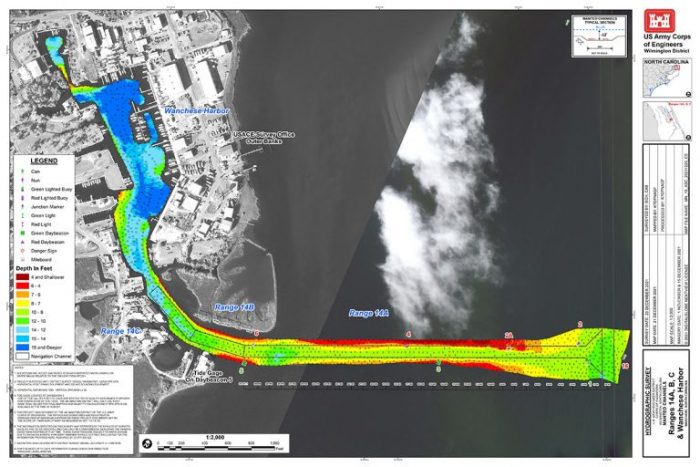
The majority of the dredge material for the Manteo channels, Dooley said, will be deposited on a nearby existing disposal area known as “Island H.” Also known as “spoil islands” or “bird islands,” to describe where sand from past dredging projects has built up at certain spots in the waterway, areas such as “Island H” are running out of room for more sand.
Dooley said that with many Corps projects, the nonfederal sponsor has the responsibility for providing easements and right-of-way for disposal sites, which must be done before a project can move forward. “Island H,” he said, typically has been maintained and managed by Dare County and the state.
The Corps is coordinating with the county, which is seeking a permit to increase capacity. Dooley said that he expects no problem with obtaining the permits in time to do the dredge work.
Dooley added that the Corps tries to deposit compatible sand at other areas where it can create habitat.
“When we can, we always like to do beneficial use of dredge material,” he said. “South of Wanchese, the material is pretty good sand for the most part. So where we can, we’re going to put that sand on adjacent bird islands.”
Silver Lake Harbor/Stumpy Point Bay
Ocracoke’s Silver Lake Harbor project, $4.37 million, and Dare County’s Stumpy Point Bay, $2.58 million, were funded as separate projects, but will be one contract.
Dooley said it is more efficient to do them in a single contract because they’re close together.
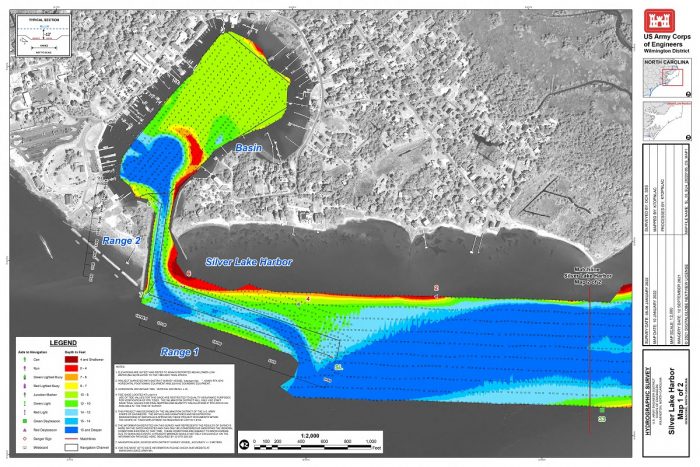
“Either one of those projects alone, it’s not a lot work,” he said. “So combining the work together makes it more appetizing for a contractor … We can share the cost between the projects to get the dredge there and then do work at both projects.”
There is an area in the Hatteras-Ocracoke ferry channel coming into Ocracoke where there is shoaling north of Bigfoot Island, an old bird island. That is the most important shoal the Corps is dealing with at the Silver Lake Harbor project.
At Stumpy Point Bay, which is one end of the emergency ferry channel between Rodanthe and the Dare County mainland at Stumpy Point, dredging needs to be done at the approach to the channel into Stumpy Point basin.
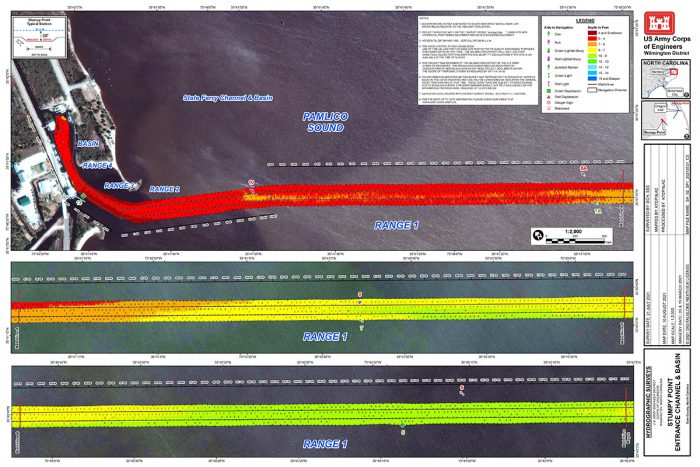
The state Ferry Division has also requested that while the Corps’ contractor is in Stumpy Point, to have it dredge an approach to the state ferry dock that is outside the authorized federal channel.
The additional work would be paid for by the state Department of Transportation, which oversees the division, under an updated agreement between the state and the Corps.
Avon Harbor
Federal funding of $1.60 million will go to dredge Avon Harbor. For years, the community has been requesting help with shoaling in the harbor, which is not a federal waterway, but it has been hampered by costs.
Even with the infrastructure funds, the project can’t move forward until there is a suitable disposal site for the dredge material.
A disposal area at the entrance to the harbor is currently at capacity, Dooley said.
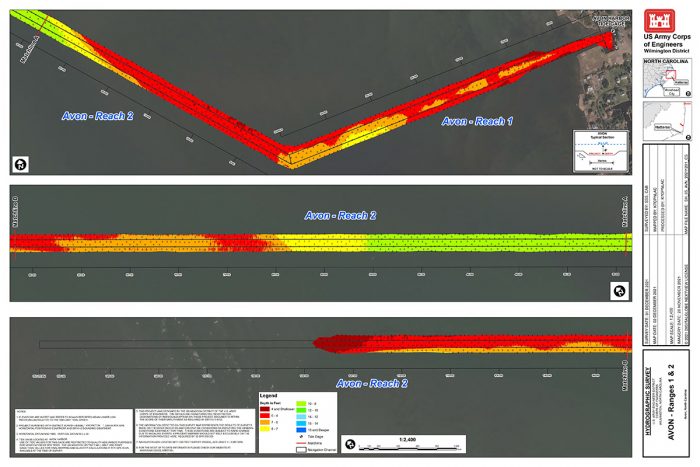
As the nonfederal sponsor, Dare County has to provide the disposal area, he said. The Corps is working with Dare on finding options, potentially an upland site the material can be pumped to, or even exploring whether the material could be used on public land in Cape Hatteras National Seashore.
The goal is to award the contracts before the end of the fiscal year, Keister said. But if the Avon issue is not resolved by then, there is still wiggle room, but he does not expect to lose the funds.
“We don’t want to rush to failure because of a fiscal year,” Keistler said. “We have a little more leeway with (projects) like Avon Harbor that have some additional hurdles to cross that we’re not driven by the Sept. 30 date.”
Rollinson Channel
Federal funding of $1.43 million will go to dredge Rollinson Channel, which has been the only authorized federal channel in Hatteras Inlet for a long time, based mostly on it being the original channel for Hatteras-Ocracoke vehicular ferry, the state’s busiest ferry route.
Historically, charter and commercial fishing fleets had also depended on the route from Hatteras village to the end of the Hatteras spit, where they could turn toward Ocracoke or head out to the ocean.

But dramatic increases in shoaling in the channel, accompanied by rapid erosion of the spit after hurricanes Irene in 2011 and Sandy in 2012 eventually led to portions of the channel becoming impassable, and impossible to dredge. In 2014, the ferry division made a longer U-shaped channel the official ferry channel to avoid the dangerous shoaling.
Since then, additional shoaling in other inlet channels have hindered safe passage for vessels, but complicated agreements and permits were necessary to secure Corps dredging
Soon the Rollinson Channel will be realigned officially, which will expand the federally authorized area in the inlet where the Corps can dredge. Most significantly, the South Ferry Channel and the Sloop Channel, used mostly by commercial vessels and ferries, respectively, will be allowed to be maintained by the Corps, making it easier for the government dredges to do the work when they’re already working in Rollinson.

Comparing unchecked shoaling to an overgrown lawn, Keister said that more regular dredging will also make it a lot easier to dredge.
Once the realignment is finalized, he said, “that will allow us to be a little more creative and flexible where we can dredge and open it up.”
First in the series: Federal dollars now available for North Carolina waterways




